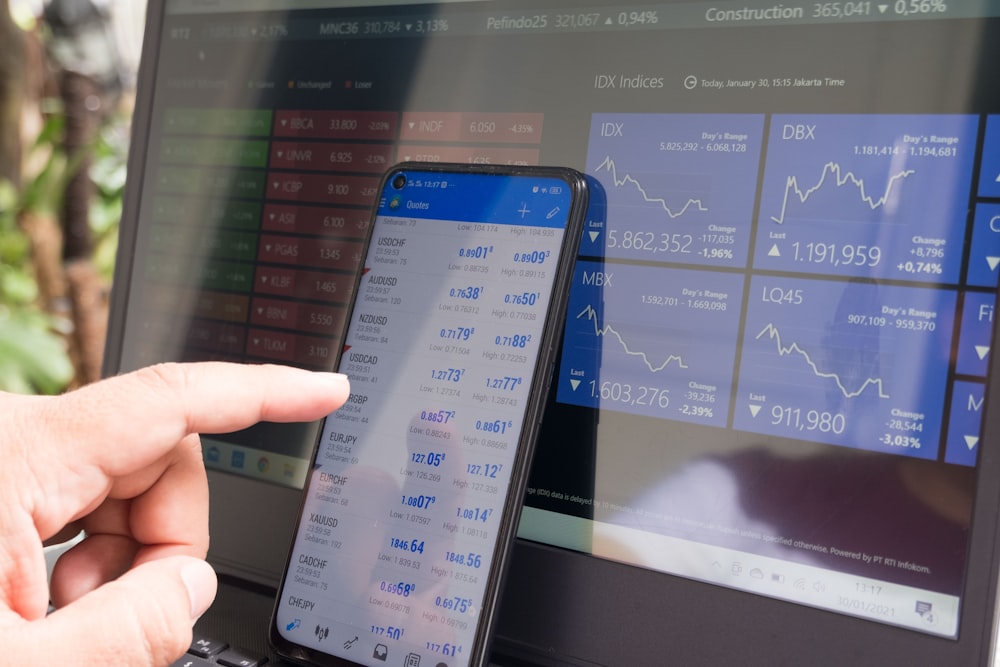Revisiting Duolingo: The Power Of Consumer Brands
Image Source: Unsplash
I recently went back and looked at the very first Green Screen list — almost three years ago, in November 2022. I was curious to see which stocks performed best, which lagged, and whether any patterns emerged that might help us going forward.
One stock delivered an absolutely ridiculous return: Palantir (PLTR), a 20-bagger in under three years! If you owned that one, hats off to you. It’s looked expensive to me for years — and still does today.
The #2 performer (up 360%) was both a surprise and a bit of a disappointment: Duolingo (DUOL). I strongly considered it but ultimately passed back then.
Another standout was DoorDash (DASH), up roughly 330%. I saw DoorDash as a quintessential “pandemic stock” in 2022 and rejected it too.
But I didn’t miss everything — we did grab four of the top 15, including CRWD, NOW, ZS, and MELI.
Looking across the winners, one theme jumps out: strong consumer brands dominated. Beyond Duolingo, DoorDash, and MercadoLibre, you can add Tesla (TSLA), Take-Two Interactive (maker of Grand Theft Auto), and Celsius (CELH) to that group.
Even the weakest of that bunch — Celsius — is still up over 90%! That’s eye-opening. If you read the writings of great investors like Warren Buffett, Peter Lynch, or David Gardner, you’ll notice this is their bread and butter: strong consumer brands. I think we’ve underweighted that factor. That changes today.
From now on, I’ll be placing special emphasis on identifying great consumer brands that pass our screens. And we’ll start with a fresh look at Duolingo.
Duolingo’s Business
Most readers are probably familiar with Duolingo. It offers a free, gamified mobile app for learning a variety of languages. While the free tier is ad-supported, most revenue (~80%) comes from paid subscriptions to Super Duolingo, which removes ads and adds premium features. Ads account for about 13% of revenue, while another 6% comes from users paying to take the Duolingo English Proficiency Test.
As of mid-2025, Duolingo has over 10 million paying subscribers and roughly 185 million total users, with more than 40 million using the app daily.
Revenue Recurrence and Growth
Duolingo’s revenue is highly recurring — over 80% from monthly subscriptions and another 13% from ads shown to free users.
The company continues to grow rapidly, with revenue expanding at a 44% CAGR over the past three years and maintaining similar momentum in recent quarters. Paid subscribers are growing near 40% annually, with conversion from free to paid users climbing from 3% in 2020 to about 9% today — impressive, but still with room to improve.
Growth is driven by both subscriber gains and pricing power (Super Duolingo’s price rose 14% last year). The company is also broadening its offerings, adding nearly 150 new cross-language pairs in 2025 and expanding into Math, Music, and Chess using AI tools.
Conservatively, I think mid-20% annual revenue growth over the next five years is a reasonable expectation. This remains a clear growth story.
The Moat
When it comes to language learning, Duolingo has unmatched brand recognition. Anyone wanting to learn a language — for business, travel, or fun — is likely to start with Duolingo. That makes it the default choice, giving it a significant marketing advantage over competitors like Babbel or Rosetta Stone, who must spend heavily to gain attention.
Duolingo also benefits from economies of scale. With around 100 million monthly users, it enjoys a massive built-in audience that fuels both ad revenue and organic marketing. Babbel, by comparison, has about one-tenth as many users. This scale advantage strengthens Duolingo’s moat considerably.
Management and Financials
Duolingo’s leadership is another strong point. CEO Luis von Ahn co-founded the company in 2011 and has guided it from a crowd-sourced education idea to a $16 billion global ed-tech powerhouse. He still owns about 8% of the company, aligning his incentives with shareholders. Co-founder Severin Hacker remains active as CTO, providing long-term continuity and vision.
Financially, Duolingo is rock-solid: debt-free, with over $1.3 billion in cash and free cash flow margins above 35% in 2024 and 2025. Hard to find much to criticize there.
Risks
Duolingo’s prospects are bright, but there are a few real risks to watch.
First, churn. This isn’t a utility-like subscription model — users often cancel after 7–8 months, and annual churn exceeds 30%. That means Duolingo must continually attract new subscribers just to stay even. We saw some softness in 2025 when management perhaps overplayed its AI narrative.
Second, AI itself is both an opportunity and a risk. Devices are increasingly adding live translation capabilities, which could reduce demand for language learning. Meanwhile, AI-driven chatbots can already generate decent learning experiences, albeit less polished and engaging than Duolingo’s.
Finally, valuation remains stretched. Even after a recent pullback, shares trade around 18x sales. The company will need to keep delivering strong growth to justify that premium.
Conclusion
I clearly missed Duolingo the first time around. I was worried about churn, but most consumer subscription businesses face similar dynamics — and the sheer scale of the global consumer base can more than offset it. Going forward, I plan to put more weight on companies with strong, direct-to-consumer appeal and long growth runways.
I’m modeling 23–25% annual growth for the next five years with ~35% free cash flow margins and moderate share dilution. That gives me a fair value target of about $332 — roughly where the stock trades today. So for now, Duolingo goes on the Watch List until we get a better margin of safety.
More By This Author:
The Trade Desk: Betting On The Future Of Digital AdsCellebrite: Powering Digital Forensics And Growth
Nutanix: A Cloud IT Provider Worth Watching
Disclaimer: The content is provided for informational purposes only. The material should not be considered as investment advice or used as the basis for stock trades. Content should not be ...
more



